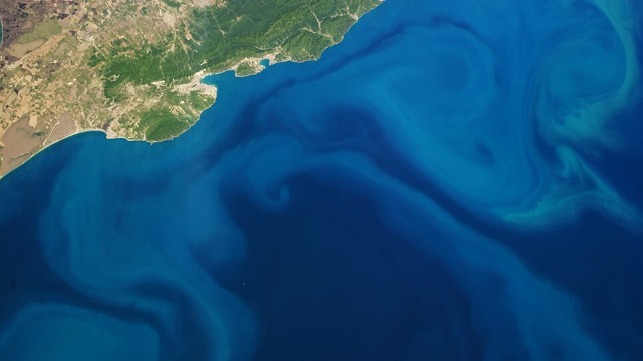Biden Administration Makes a Bet on Ocean Carbon Capture

The Biden administration is putting marine carbon dioxide removal in the spotlight with a new $36 million bet on R&D. The Department of Energy is investing in a portfolio of sensor systems and computer modeling programs that will be used to measure the success of ocean CO2 removal technologies - and determine how well they work in the real world.
“Reaching President Biden’s ambitious decarbonization goals and avoiding the worst impacts of climate change will require a wide range of innovative climate solutions, from common-sense approaches like improving energy efficiency to novel applications like utilizing the ocean’s natural carbon removal abilities,” said Secretary of Energy Jennifer Granholm in a statement.
Marine carbon dioxide removal (mCDR) is a form of climate engineering, the practice of deliberate, large-scale interventions to change the earth's temperature. The idea of carbon removal is generally accepted - for example, tree planting and forest conservation for carbon credits - but more novel methods, like manipulating ocean chemistry or marine ecosystems to remove carbon, could come with side effects.
A wave of startups with mCDR plans have popped up in the U.S., and they offer a range of solutions, including bulk cultivation of seaweed, CO2 extraction and alkalinity enhancement. All are intended to take out the gigatonnes of dissolved carbon found in the ocean and sequester it somewhere else - either on the seafloor or in a permanent underground reservoir. Since the ocean absorbs CO2 from the air, removing CO2 from the ocean should lead to less CO2 in the atmosphere, slowing down warming.
Researchers say that the many technologies for marine carbon removal will need to be carefully evaluated to make sure that they perform as advertised, and that the captured carbon stays out of the atmosphere. The Biden administration's research grants are intended to help with that measurement process.
The $36 million in DOE funding will go to 11 projects in computer modeling and sensor technology. The largest, a $5.9 million grant to the University of Colorado, will go towards developing optical underwater laser sensors that can measure dissolved carbon compounds. Another $4.2 million will go to GE, and will be used for the development of a towed fiber optic sensor cable that can measure chemical carbon content in the ocean. Woods Hole will also get a $4.8 million grant for building a specialized sensor that measures concentrations of organic carbon particles in the water column.
NOAA awarded another $24 million for mCDR projects in a funding round in September. Looking ahead, DOE has announced plans to fund pilot-scale mCDR tests for different technologies, including mineralization, biomass and CO2 extraction. The details of the funding opportunity are pending.
